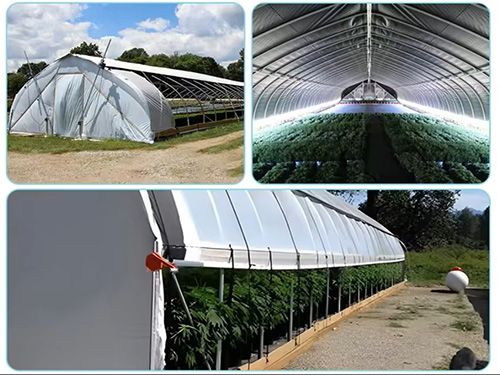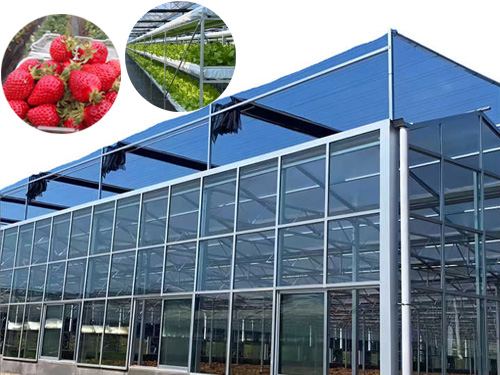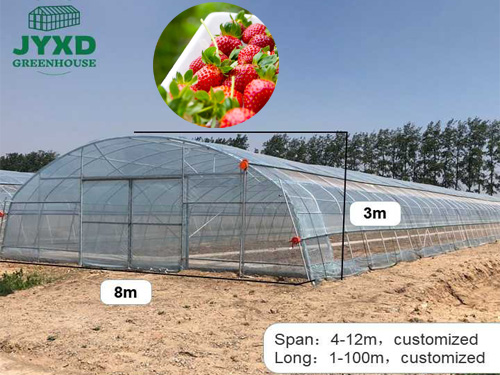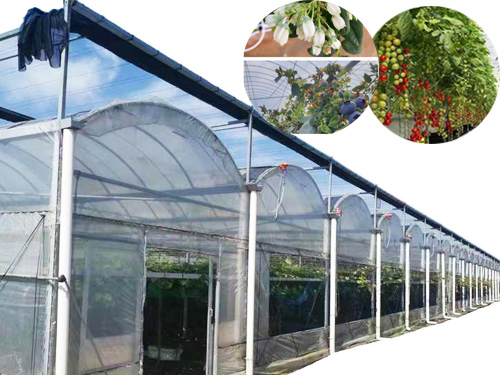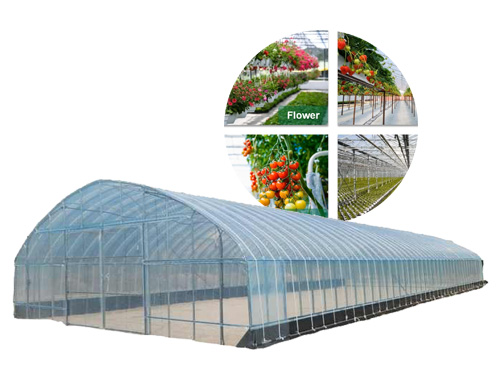NEWS DETAILS
NEWS INFORMATION
Agritourism Greenhouse Models: Visitor Experience Design & Revenue Stream Diversification
AUTHOR:jyxd-greenhouse DATE:2025-04-06 16:45:33 HITS:66
Agritourism is a rapidly growing industry that combines agriculture and tourism, offering visitors a unique opportunity to connect with farming practices and rural life. Greenhouses, with their controlled environments and year-round productivity, are ideal for agritourism ventures. By designing engaging visitor experiences and diversifying revenue streams, greenhouse operators can tap into this lucrative market. This article explores how to create successful agritourism greenhouse models that attract visitors and boost profitability.
Why Agritourism Greenhouses Matter
Agritourism greenhouses offer a win-win solution for both growers and visitors:
· For Growers: Diversify income sources, increase brand visibility, and build community connections.
· For Visitors: Provide educational, recreational, and immersive experiences in a controlled, accessible environment.
· For Communities: Promote sustainable agriculture and support local economies.
1. Designing Engaging Visitor Experiences
Creating memorable experiences is key to attracting and retaining visitors. Here’s how to design a visitor-centric greenhouse agritourism model:
Educational Tours:
· Guided Tours: Offer guided tours to explain greenhouse operations, plant growth cycles, and sustainable practices.
· Workshops: Host hands-on workshops on topics like gardening, composting, or herbal medicine.
· Interactive Displays: Use signage, videos, and interactive exhibits to educate visitors about agriculture.
Recreational Activities:
· Pick-Your-Own: Allow visitors to harvest fruits, vegetables, or herbs for a fun and rewarding experience.
· Themed Events: Organize seasonal events like pumpkin patches, flower festivals, or holiday markets.
· Photo Opportunities: Create Instagram-worthy spots with lush plants, floral arrangements, or unique greenhouse designs.
Farm-to-Table Experiences:
· On-Site Café: Serve fresh, greenhouse-grown produce in a café or restaurant.
· Cooking Classes: Teach visitors how to prepare meals using greenhouse ingredients.
· Farm Stands: Sell fresh produce, plants, and value-added products like jams or sauces.
2. Diversifying Revenue Streams
Agritourism greenhouses can generate income from multiple sources, reducing reliance on traditional crop sales. Here are some revenue diversification strategies:
Admission Fees:
· Tickets: Charge admission for tours, workshops, or events.
· Memberships: Offer annual memberships for unlimited access or exclusive perks.
Retail Sales:
· Plants and Produce: Sell plants, flowers, and fresh produce to visitors.
· Merchandise: Offer branded merchandise like T-shirts, mugs, or tote bags.
· Value-Added Products: Create and sell products like honey, candles, or herbal teas.
Partnerships and Sponsorships:
· Local Businesses: Collaborate with restaurants, breweries, or spas to feature greenhouse products.
· Sponsorships: Partner with brands or organizations for funding and exposure.
Event Hosting:
· Private Events: Rent out the greenhouse for weddings, parties, or corporate events.
· Workshops and Retreats: Host wellness retreats, yoga classes, or art workshops.
3. Best Practices for Agritourism Greenhouse Success
To ensure the success of your agritourism greenhouse, follow these best practices:
Focus on Accessibility:
· Location: Choose a convenient location with ample parking and public transport access.
· Facilities: Provide clean restrooms, seating areas, and wheelchair-accessible paths.
Ensure Safety:
· Signage: Use clear signage to guide visitors and highlight safety rules.
· Staff Training: Train staff to handle emergencies and assist visitors.
Promote Sustainability:
· Eco-Friendly Practices: Use renewable energy, water-saving systems, and organic growing methods.
· Educational Messaging: Highlight your sustainability efforts to attract eco-conscious visitors.
Market Effectively:
· Social Media: Use platforms like Instagram and Facebook to showcase your greenhouse and events.
· Local Partnerships: Collaborate with tourism boards, hotels, and travel agencies to attract visitors.
· Seasonal Campaigns: Promote seasonal activities like spring flower shows or fall harvest festivals.
4. Case Studies: Successful Agritourism Greenhouses
The Flower Fields in California:
· Model: A sprawling greenhouse complex offering flower-picking, tours, and seasonal events.
· Success: Attracts over 200,000 visitors annually and generates revenue from admission, retail, and events.
Butterfly World in Florida:
· Model: A greenhouse-based attraction featuring butterfly exhibits, gardens, and educational programs.
· Success: Combines agritourism with conservation, drawing families and school groups year-round.
The Greenhouses at St. Jacobs in Canada:
· Model: A network of greenhouses offering farm-to-table dining, workshops, and retail sales.
· Success: Builds on local agricultural heritage to attract tourists and support the community.
5. Benefits of Agritourism Greenhouses
Implementing agritourism greenhouse models offers numerous advantages:
· Increased Revenue: Diversify income streams through admissions, retail, and events.
· Brand Exposure: Build a loyal customer base and enhance your brand’s visibility.
· Community Engagement: Foster connections with local residents and tourists.
· Sustainable Growth: Promote eco-friendly practices and support local agriculture.
Conclusion
Agritourism greenhouses are a powerful way to diversify revenue, attract visitors, and promote sustainable agriculture. By designing engaging experiences and exploring multiple income streams, greenhouse operators can tap into the growing demand for authentic, educational, and recreational farm experiences. Whether you’re a small-scale grower or a commercial operation, agritourism offers a unique opportunity to grow your business and connect with your community.
For more expert tips and high-quality greenhouse solutions, visit our website and take your agritourism venture to the next level. Let’s grow smarter and cultivate a greener future together!
![]()
Meta Description: Discover how agritourism greenhouse models can attract visitors and diversify revenue streams. Learn strategies for designing engaging experiences and boosting profitability.
Hebei Juyou Xinda Greenhouse Facilities Co.,Ltd.
Copyright © 2024-2025 https://www.jyxd-greenhouse.com. All Rights Reserved Hebei Juyou Xinda Greenhouse Facilities Co.,Ltd.Copyright





 Current Location:
Current Location:


